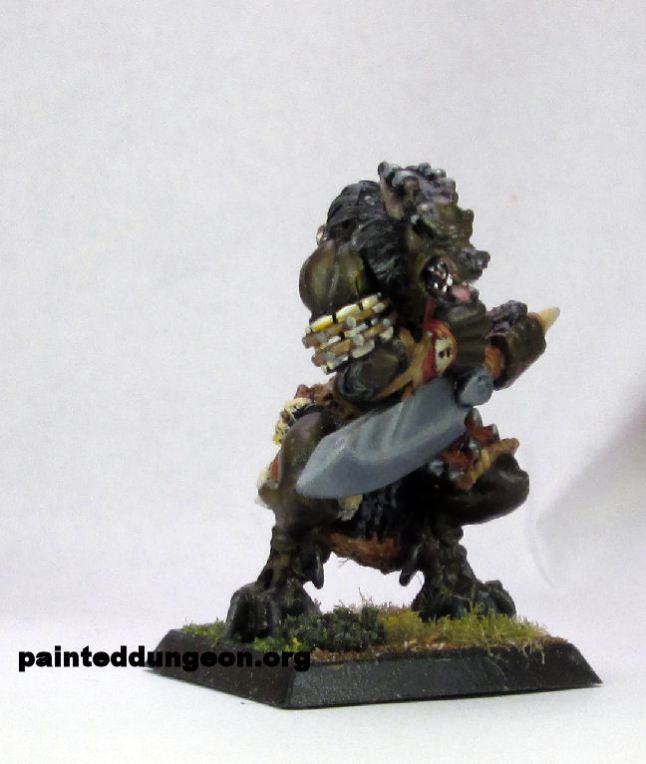Almost exactly a year ago, I was back in southern Africa for the post-volunteer celebratory road trip. The stop I had requested and lobbied for early in the planning stages was the Tsodilo Hills, a random outcrop of rocks in the otherwise flat expanse of northwestern Botswana. The hills are storied and sacred to the San people, and covered in enough ancient paintings to earn it a spot on UNESCO’s list of World Heritage Sites as well as the title “The Louvre of the Desert.” The promise of hiking over terrain (not a thing in northern Namibia) was enough to get my sporty colleagues on board with my outdoor-museum plan.
Getting to the campsite was one of the more significant ordeals of the trip, as we dealt with our second flat tire, unmarked roads, and a gatekeeper demanding an entrance fee to the park, which the guidebook had not listed (we knew better than to blindly trust the guidebook, but we were tired and punchy after the tire incident). When we got to the campsite after traversing a web of potholes and detours through the bush, it was completely abandoned. There were no vehicles parked near the office, but we could hear a generator humming out back. We followed the sound and found the generator hooked up to a printer, its ready light blinking. Not wanting to find out what kind of horror-movie plot would spit out of the printer that was the only living thing in this abandoned campsite in the shadow of a sacred hill, we hurried back to the truck. As we walked back, we realized we were being followed by a three-legged dog from the village where we fixed our tire. Then, two men with machetes emerged, silently, from the woods as we were building a fire, and I thought (not for the first time on that trip), “is this how I die?”
The men were not murderers, but the camp manager and his brother clearing some brush from the trails. We made our introductions, shared dinner, named the three-legged dog Stella, and set up a guided hike for the next morning.
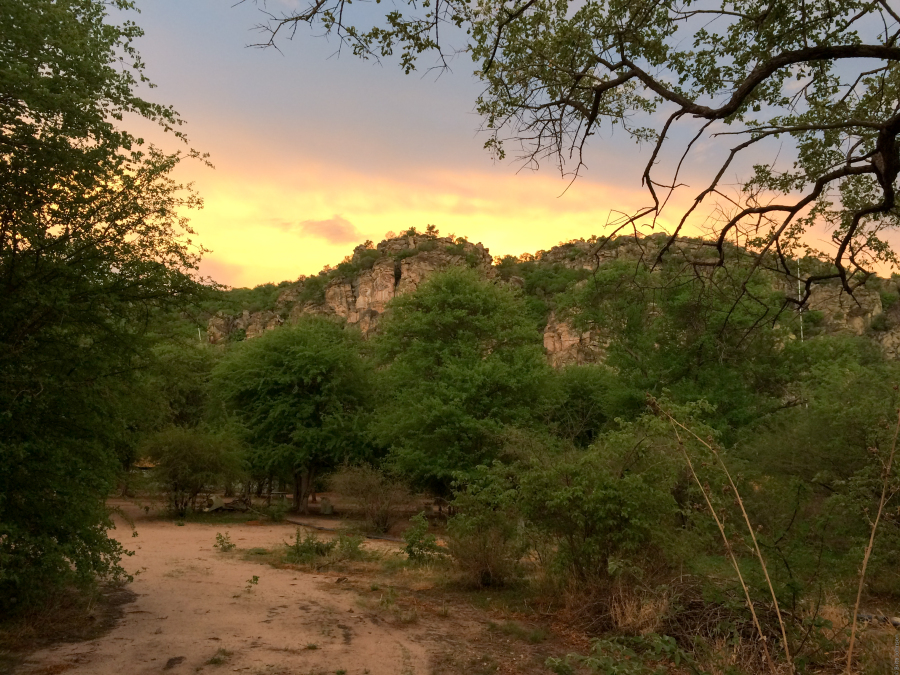
The manager took us (and Stella) on a circuit of the Female Hill, the mid-sized of the three main hills (the others being Male and Child) and home to the majority of the site’s rock paintings. We hiked through the brush, along cliff faces, and in and out of caves to spot each group of deep red, highly detailed paintings.
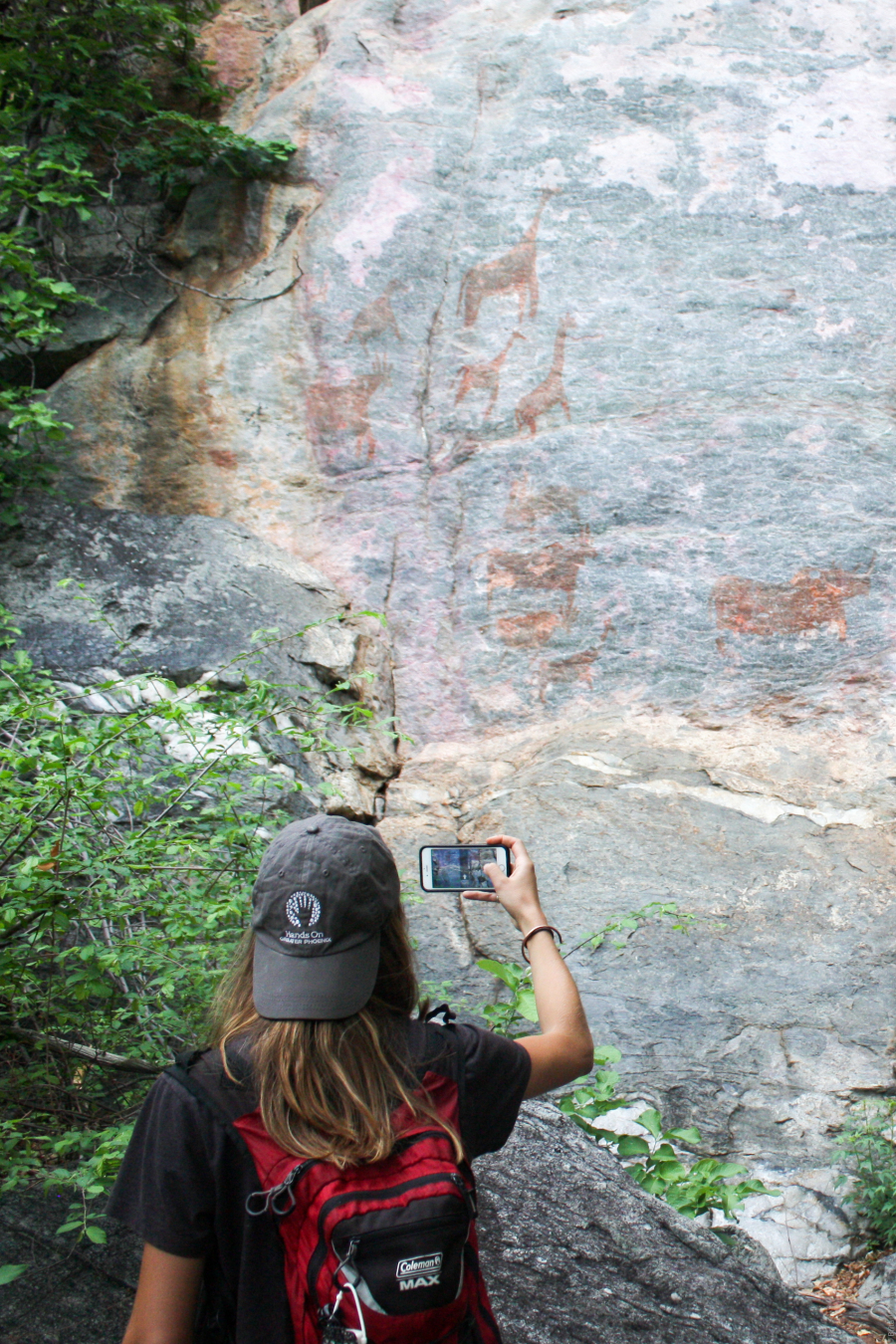
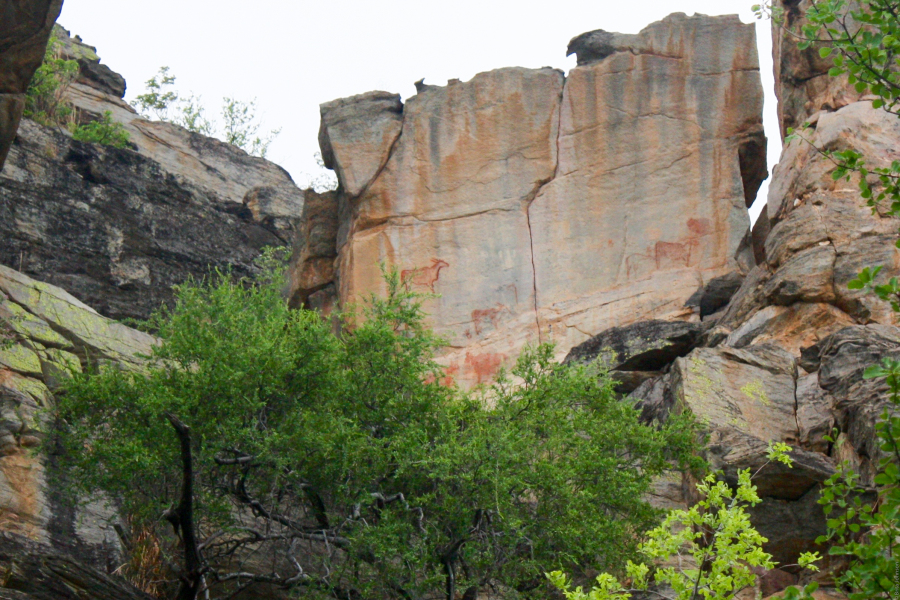
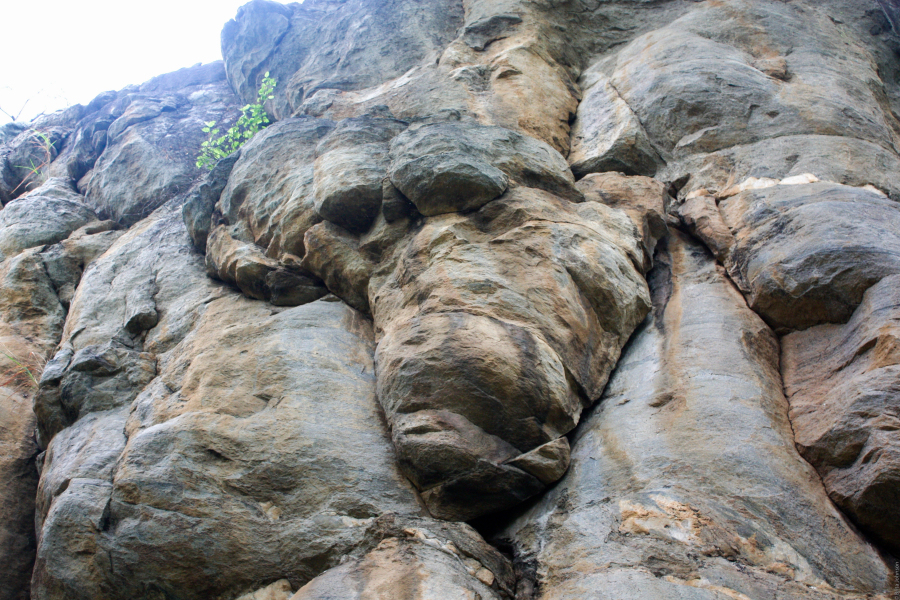
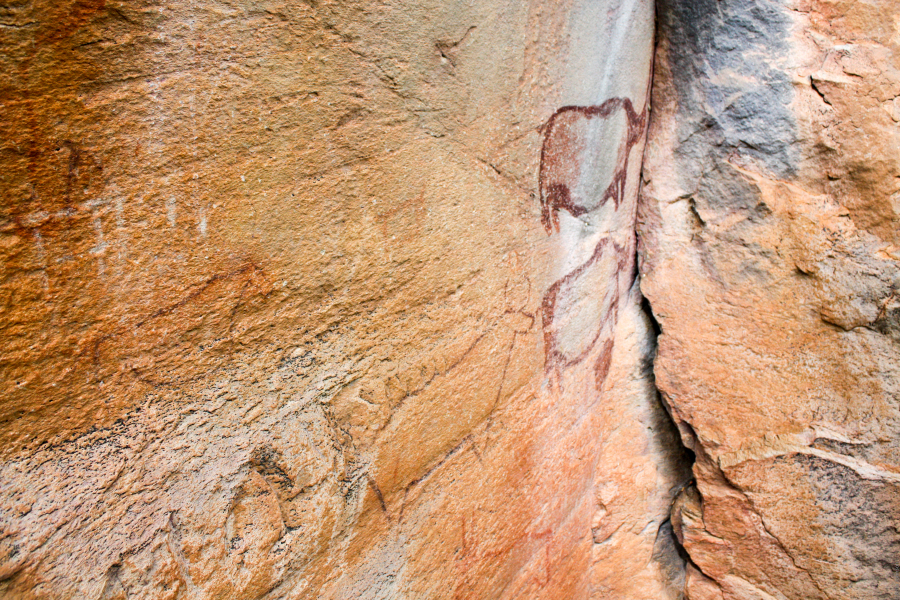
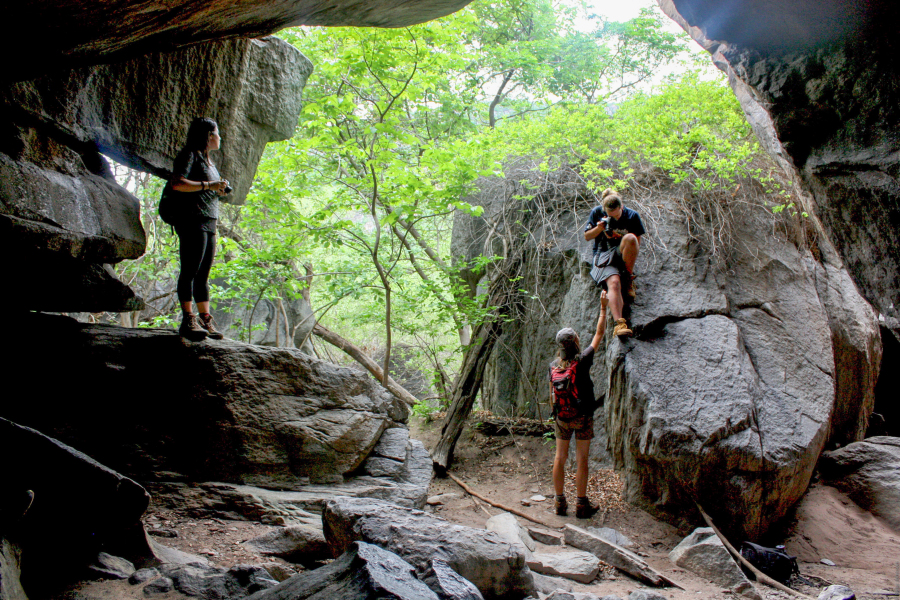
The paintings depicted primarily the local large mammals (giraffe, rhino, eland), but this tiny drawing of whales and a penguin imply that the painters were also travelers, covering the same ground from the Hills to the Cape Coast thousands of years before us.
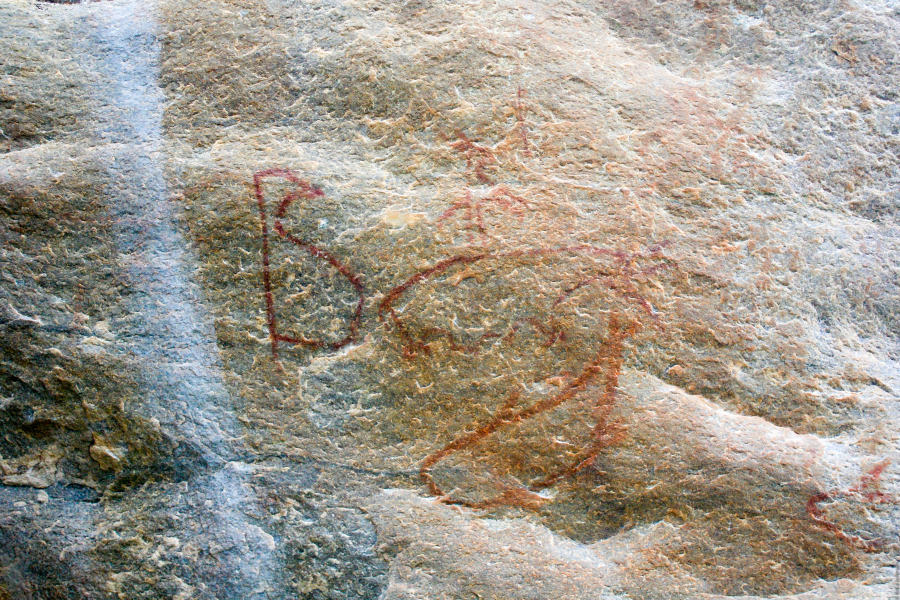
Images: The team exploring Tsodilo Hills, Botswana, 2016.
Advertisements Share this:




